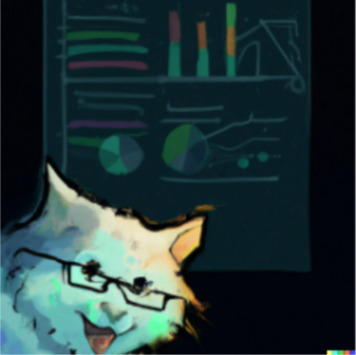Project Description
The tourism industry's contribution to Australia's GDP in 2021-2022 remains below the 2018-19 level of 3.1% [1], despite the SATC launching the ambitious South Australian Visitor Economy Sector Plan 2030. We know that the youth market contributes 27% of all visitor arrivals to Australia and 45% of all visitors spend. In 2019, 2.4 million youth visitors to Australia spent $20 billion. [2]. But traditional tourism, such as site visits, is seen as boring by our young demographic.
We also know that nine in ten children spend at least one hour a week on screen-based activities, with a rise in children spending more than 20 hours a week. However, a test conducted on 68 children also shows that kids who use gamification score comparably to traditional study methods [3][4].
Our goal is to look at how we might leverage gamification to involve children in planning family trips that are both fun and educational, and reward them for their engagement while also boosting our visitor economy.
We created SA Adventure Quest, a fresh and engaging video game that lets local businesses list offers and allows gamers to choose their quest to unlock rewards upon completing educational games. The users can then redeem their points at the location they are visiting. The game truly incentivises families and children to explore new and exciting sites based on their preferences, while also educating them about the rich and vibrant cultural heritage of South Australia. With SA Adventure Quest, children can contribute to family trip planning, while having fun; parents feel good and stress-free; local businesses get rewarded.
[1] https://www.abs.gov.au/statistics/economy/national-accounts/australian-national-accounts-tourism-satellite-account/latest-release#:~:text=Data%20downloads-,Key%20statistics,%2D19%20level%20of%203.1%25.
[2] https://www.tourism.australia.com/en/insights/industry-sectors/youth.html
[3] https://www.kaggle.com/datasets/gianinamariapetrascu/gamification-students-grades?resource=download
[4] https://www.abs.gov.au/statistics/people/people-and-communities/cultural-and-creative-activities/latest-release
Data Story
What’s the Problem?
The tourism industry's contribution to Australia's GDP in 2021-2022 remains below the 2018-19 level of 3.1% [1], despite the SATC launching the ambitious South Australian Visitor Economy Sector Plan 2030. We know that the youth market contributes 27% of all visitor arrivals to Australia and 45% of all visitors spend: 2.4 million youth visitors to Australia in 2019 spent $20 billion. [2]. But traditional tourism, such as site visits, is seen as boring by our young demographic.
Data visuals:
-Tourism Consumption Spend (2007-2022)

-Intrastate Overnight Trips by South Australians

How Might We...
We asked young Alyssa, our 11-year-old friend, about her experience travelling with her family. She often finds long car trips boring and her siblings annoying. To cope with these long travel trips, young Alyssa spends four hours on her iPad, mindlessly collecting coins on video games. This is a common behaviour of young people, with data showing that nine in ten children spend at least one hour a week on screen-based activities, with a rise in children spending more than 20 hours a week. We looked at how we might leverage gamification to involve her in planning family trips and reward her for her engagement, while also boosting South Australia's visitor economy.
Data visuals:
-Students using gamification as a method of study (The test shows that gamification is comparable to traditional study methods in scoring)

Our Solution:
The solution we came up with is this fantastic idea: we took data from the Australian Bureau of Statistics, the National Tourism Survey, Tourism Australia and Kaggle, to create SA Adventure Quest. This fresh and engaging game educates about our beautiful South Australian region. Our game integrates with the SATC Trip Planner, Visual Crossing, and the Australian Tourism Data Warehouse, to showcase South Australian rich cultural and historical landmarks.
We used data to tell a story about how gamification can positively affect tourism and travel decisions to inspire families to visit new and exciting areas. On SA Adventure Quest, local participating businesses can list their rewards and offers. On the user interface, gamers can choose their adventure based on their family profile, personal preferences, and locations. When Alyssa chooses her adventure, the SA Adventure Quest game suggests trips that match her choices and unlock rewards when she answers quizzes and completes challenges about the area she is visiting. She can then redeem the points she collected at the local shops, whether it be a yummy vanilla slice or a fun activity.
By incentivising young people to explore our local towns and get involved in their history and cultural heritage, we can make a difference in people's travel decisions and make family trips enjoyable, affordable, and stress-free while boosting the tourism economy.
Local businesses are rewarded, Alyssa gets to play a fun and educational game, and her parents are happy.
The Data Story:
We analysed the data below to understand the relationships between tourism, expenditures, regional spent and gamification benefits.
We collected the data on:
•[1] The contribution of the tourism industry to Australia GDP and South Australia
•[2] The contribution of youth tourism to tourism expenditure
•[3] The time spent on games and screen vs study by young demographic (up to 15 years old)
•[4] The time spent on screens by children, weekly
•[5] The breakdown of expenses per trips by tourists
•[6] The spend per region in SA
Sources:
[1] https://www.abs.gov.au/statistics/economy/national-accounts/australian-national-accounts-tourism-satellite-account/latest-release#:~:text=Data%20downloads-,Key%20statistics,%2D19%20level%20of%203.1%25.
[2] https://www.tourism.australia.com/en/insights/industry-sectors/youth.html
[3] https://www.kaggle.com/datasets/gianinamariapetrascu/gamification-students-grades?resource=download
[4] https://www.abs.gov.au/statistics/people/people-and-communities/cultural-and-creative-activities/latest-release
[5] https://www.tra.gov.au/ArticleDocuments/185/NVS_TOURISM_RESULTS_YE_MAR_2023_2020.xlsx.aspx
https://www.tra.gov.au/ArticleDocuments/185/NVS_TOURISM_RESULTS_YE_MAR_2023_2022.xlsx.aspx
[6] SAAdelaide 2021-22
https://www.tra.gov.au/ArticleDocuments/185/SAAdelaide%202021-22.xlsx.aspx
SAAdelaide Hills 2021-22Sm2018-19 https://www.tra.gov.au/ArticleDocuments/185/SAAdelaide%20Hills%202021-22Sm2018-19.xlsx.aspx
SABarossa 2021-22Sm2018-19 https://www.tra.gov.au/ArticleDocuments/185/SABarossa%202021-22Sm2018-19.xlsx.aspx
SAClare Valley 2021-22Sm2018-19 https://www.tra.gov.au/ArticleDocuments/185/SAClare%20Valley%202021-22Sm2018-19.xlsx.aspx
SAEyre Peninsula 2021-22Sm2018-19 https://www.tra.gov.au/ArticleDocuments/185/SAEyre%20Peninsula%202021-22Sm2018-19.xlsx.aspx
SAFleurieu Peninsula 2021-22 https://www.tra.gov.au/ArticleDocuments/185/SAFleurieu%20Peninsula%202021-22.xlsx.aspx
SAFlinders Ranges and Outback 2021-22 https://www.tra.gov.au/ArticleDocuments/185/SAFlinders%20Ranges%20and%20Outback%202021-22.xlsx.aspx
SAKangaroo Island 2021-22Sm2018-19 https://www.tra.gov.au/ArticleDocuments/185/SAKangaroo%20Island%202021-22Sm2018-19.xlsx.aspx
SALimestone Coast 2021-22 https://www.tra.gov.au/ArticleDocuments/185/SALimestone%20Coast%202021-22.xlsx.aspx
SAMurray River, Lakes and Coorong 2021-22Sm2018-19 https://www.tra.gov.au/ArticleDocuments/185/SAMurray%20River,%20Lakes%20and%20Coorong%202021-22Sm2018-19.xlsx.aspx
SARiverland 2021-22Sm2018-19 https://www.tra.gov.au/ArticleDocuments/185/SARiverland%202021-22Sm2018-19.xlsx.aspx
SAYorke Peninsula 2021-22Sm2018-19 https://www.tra.gov.au/ArticleDocuments/185/SAYorke%20Peninsula%202021-22Sm2018-19.xlsx.aspx





